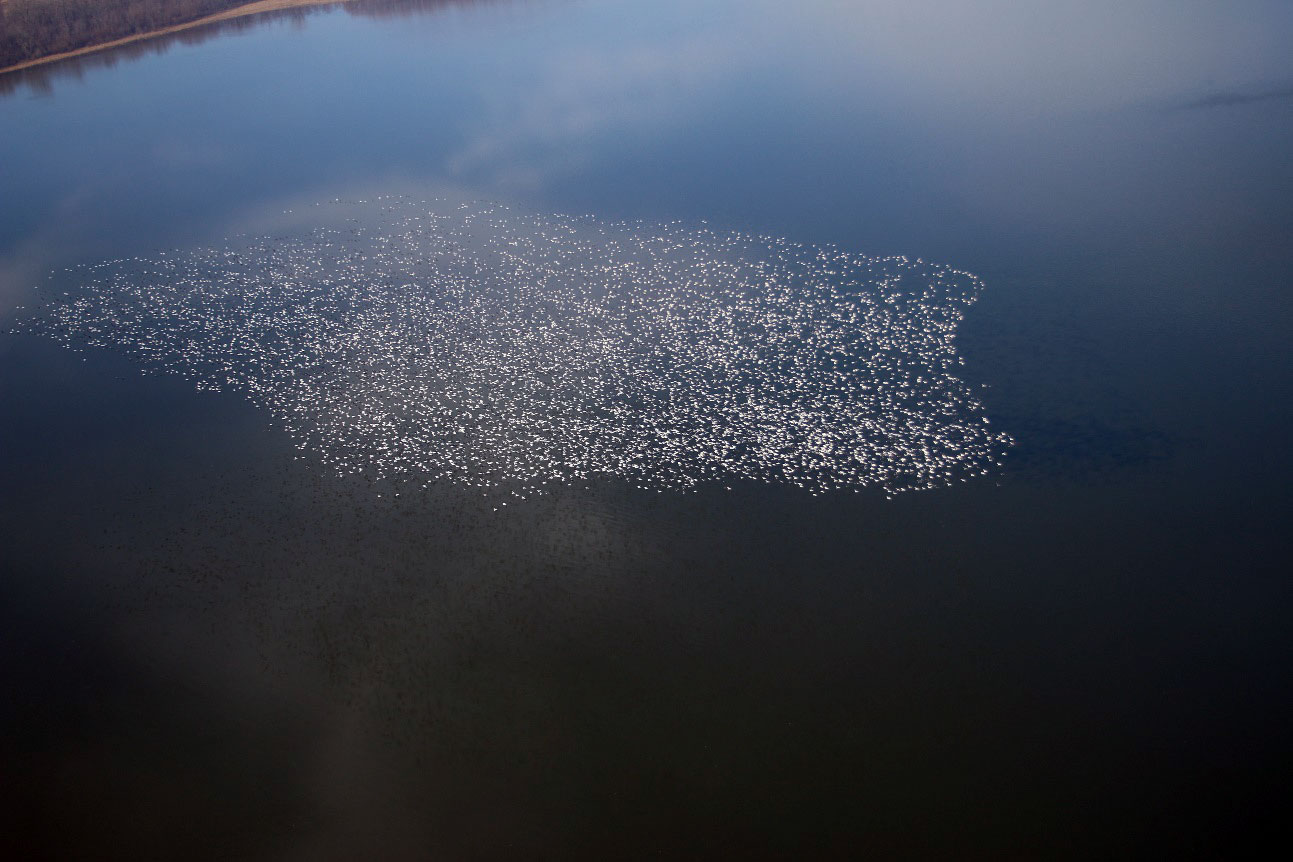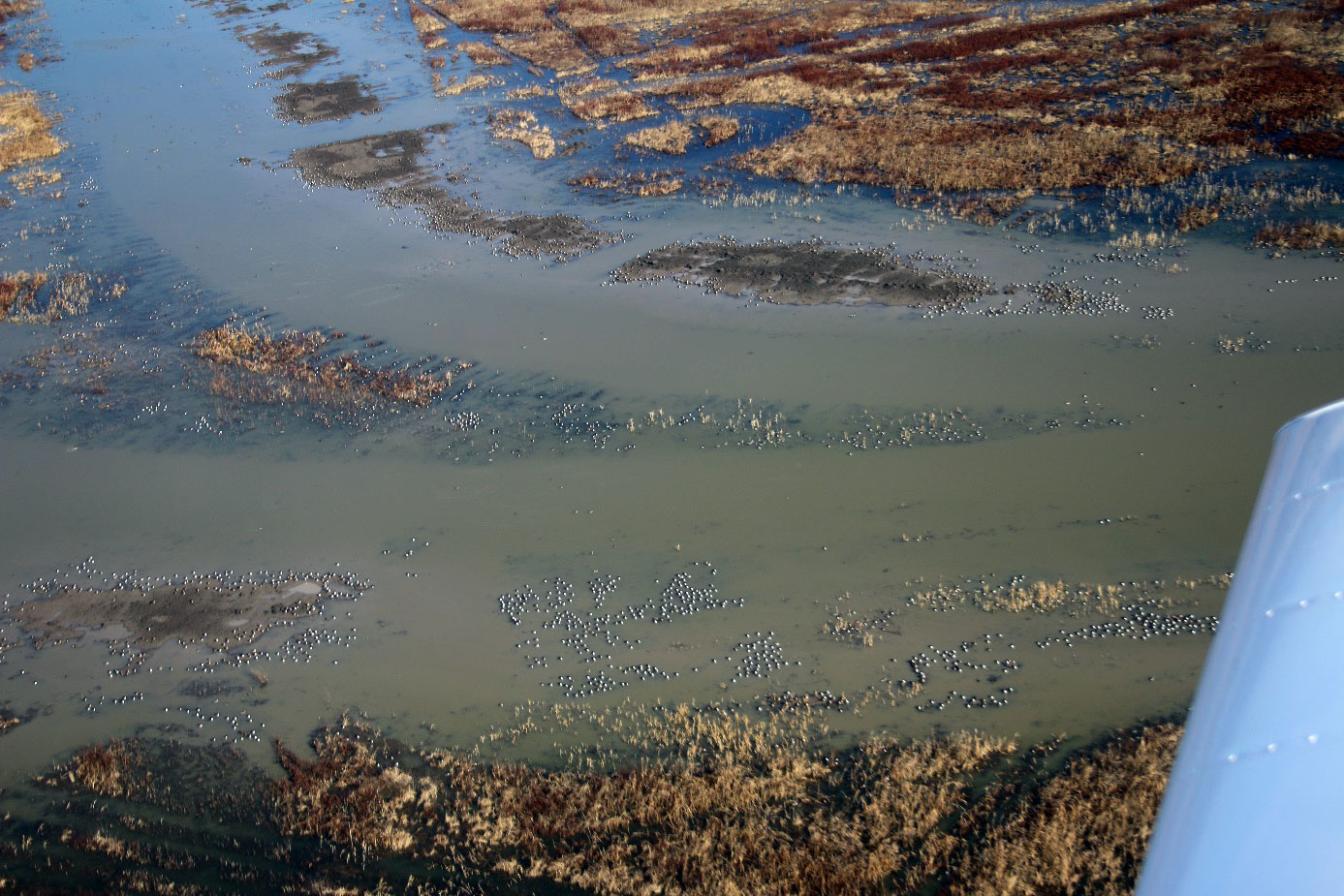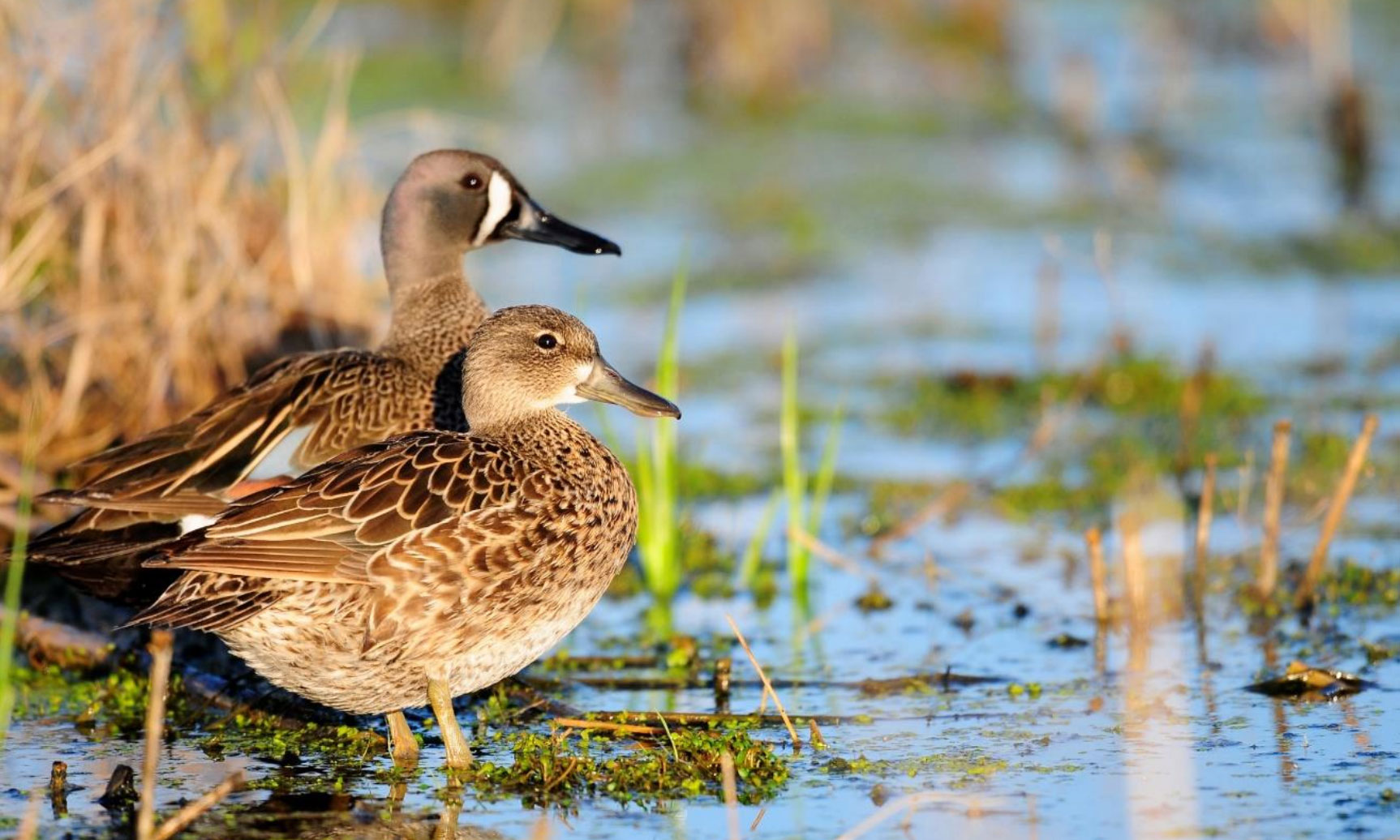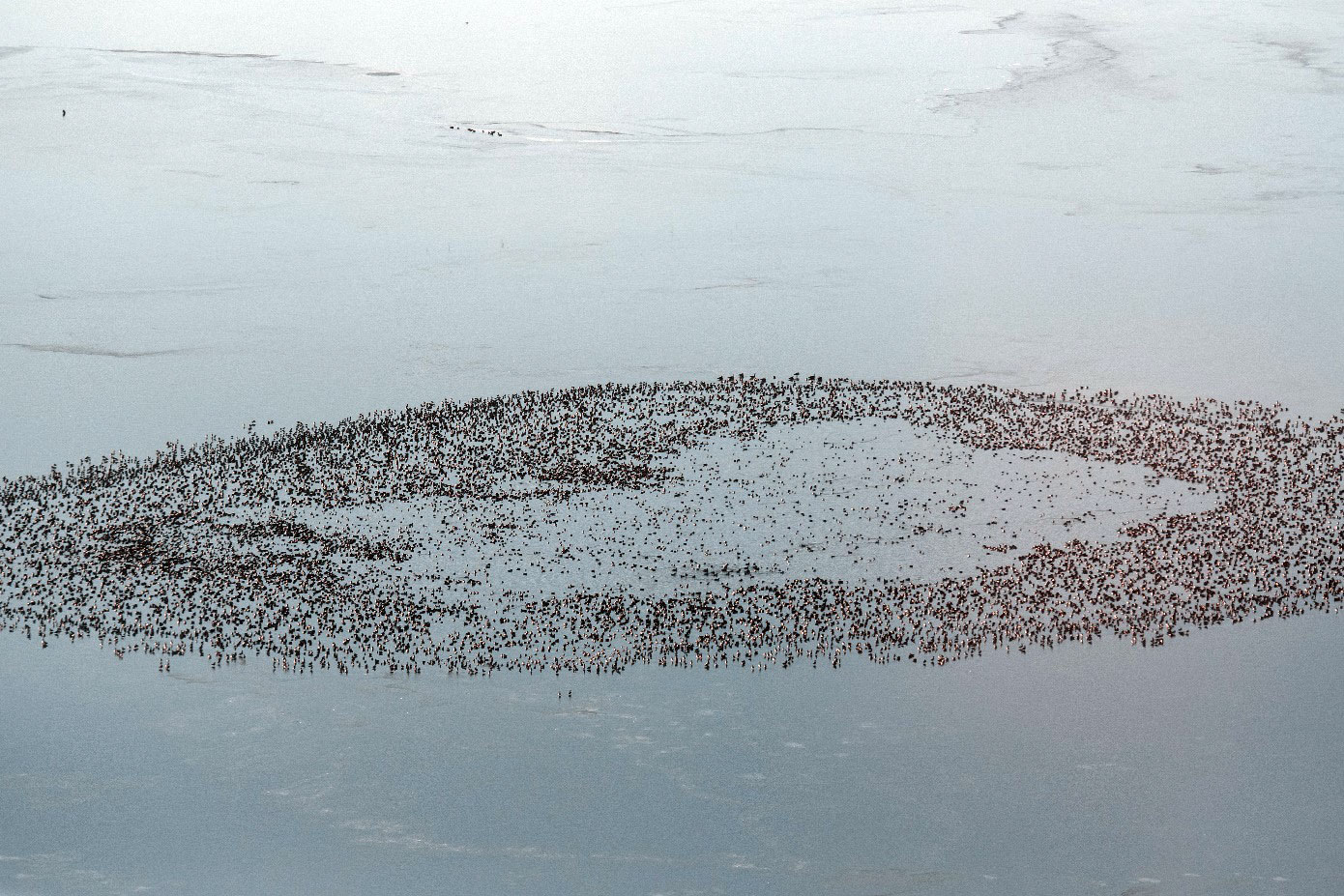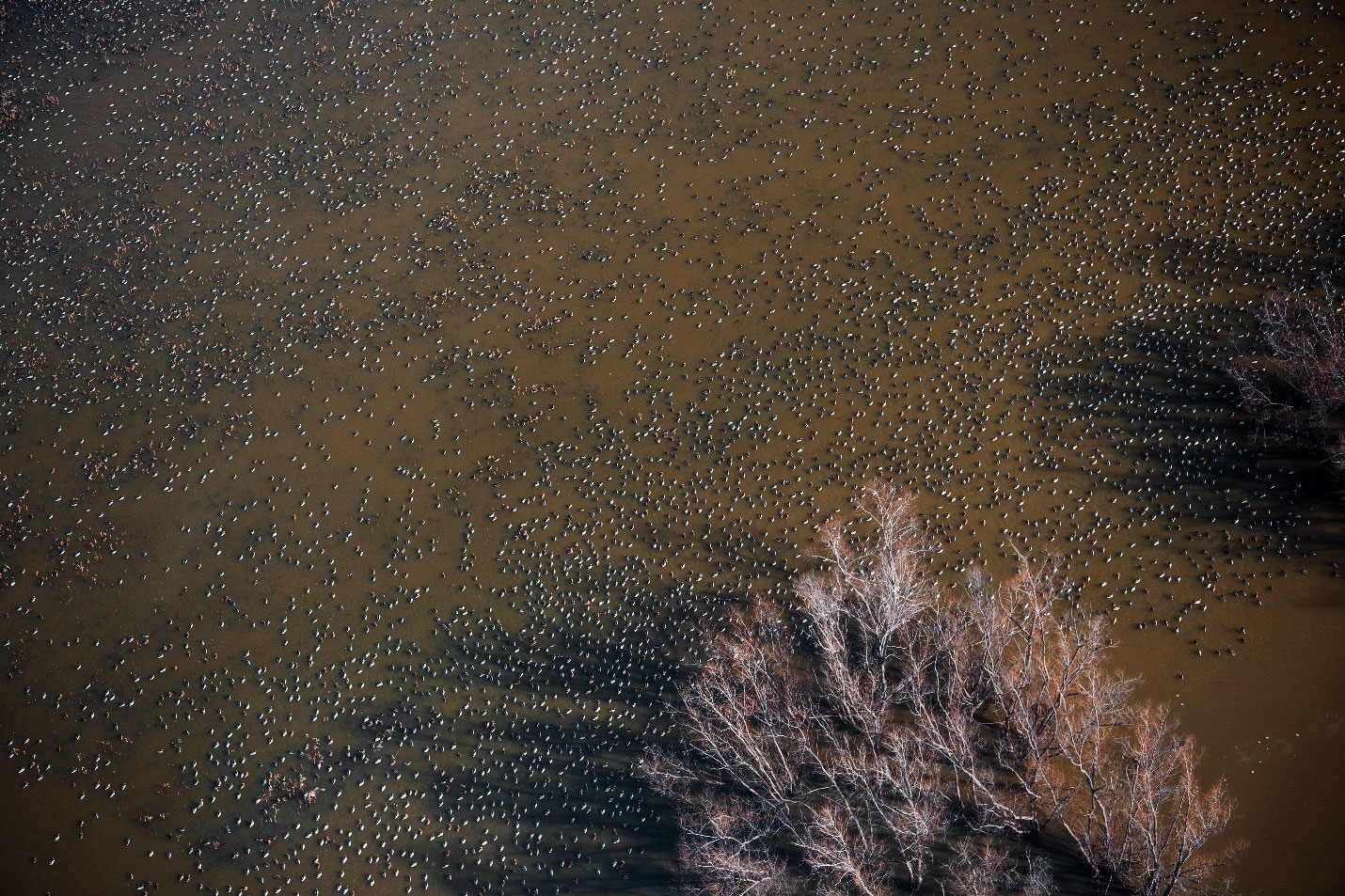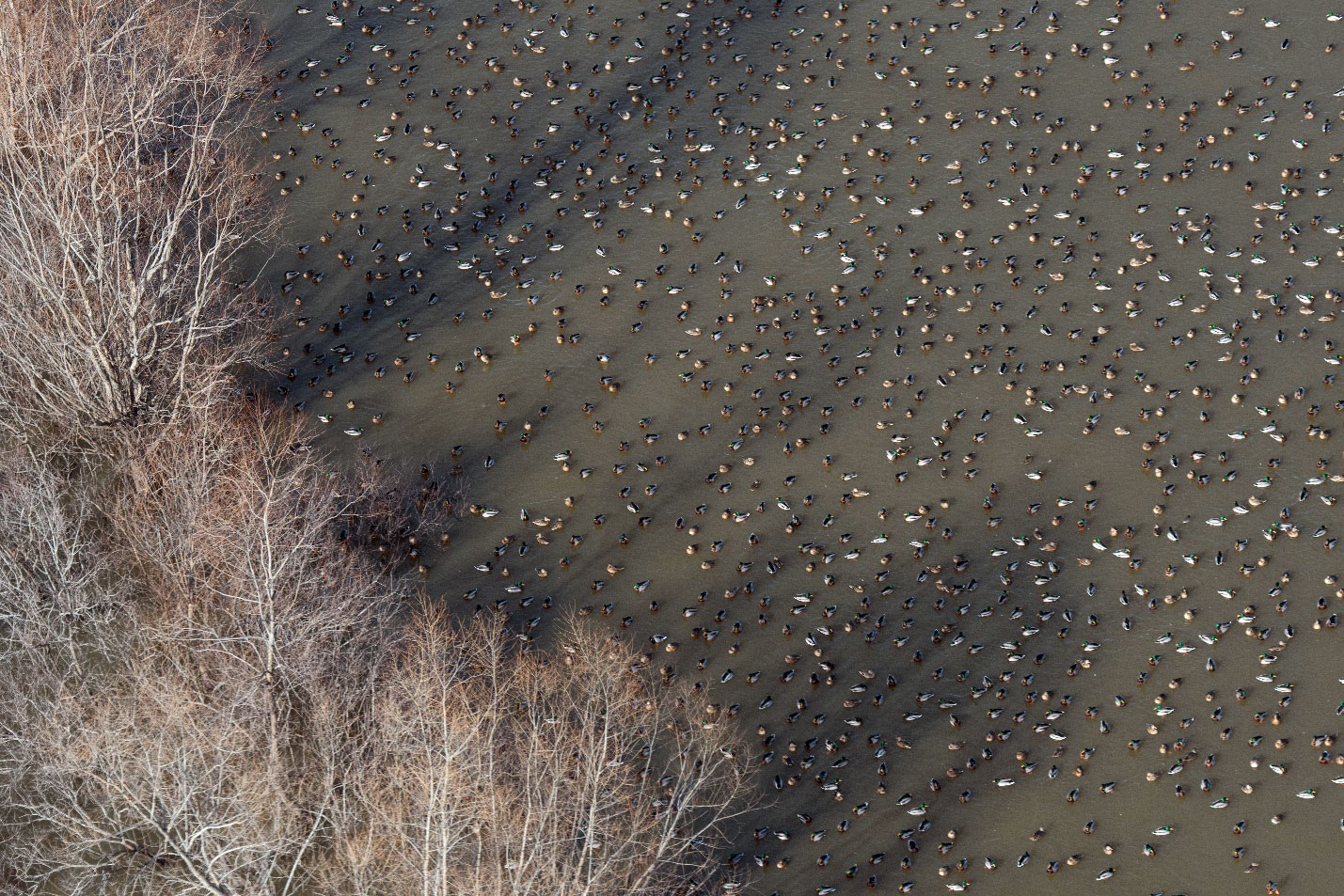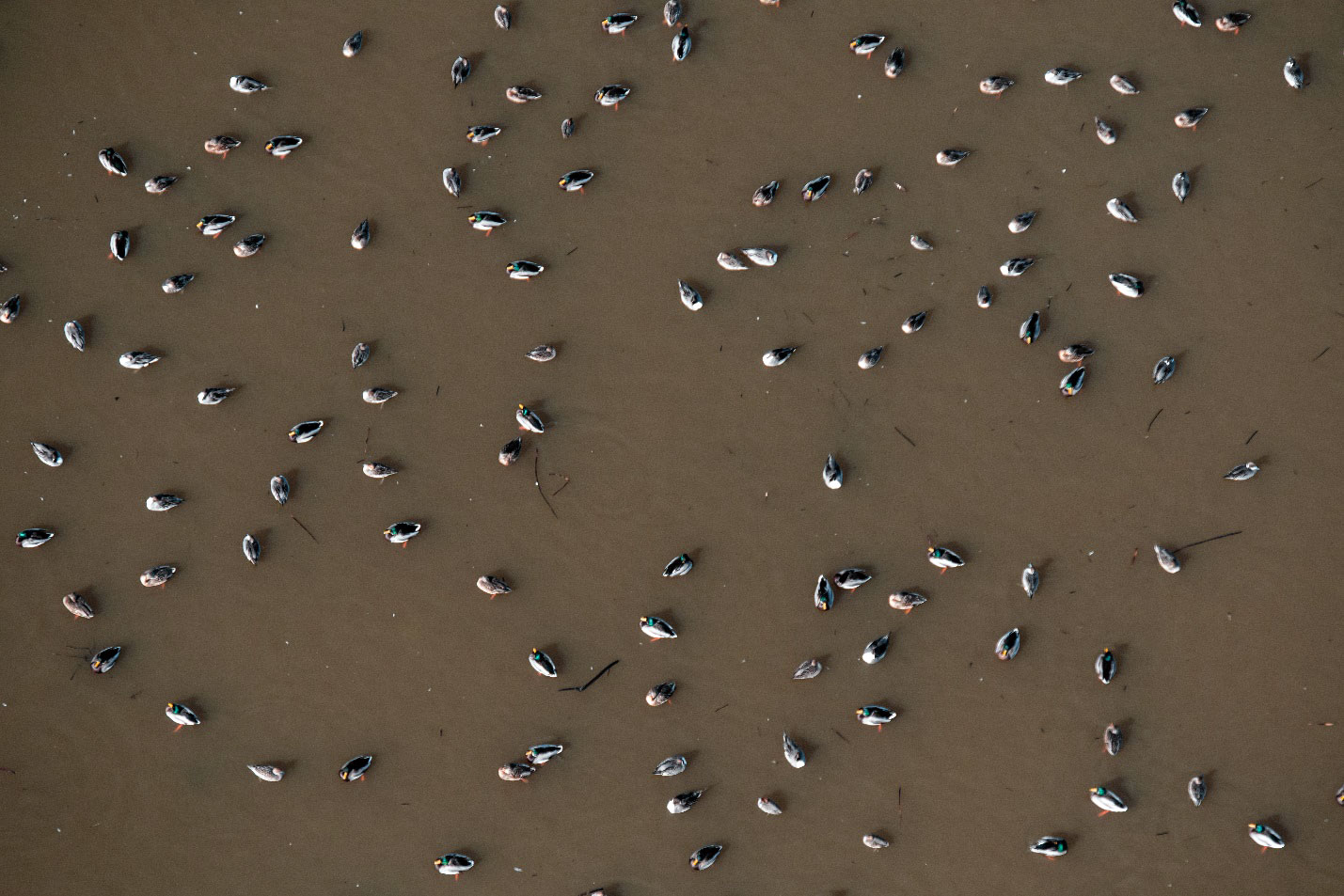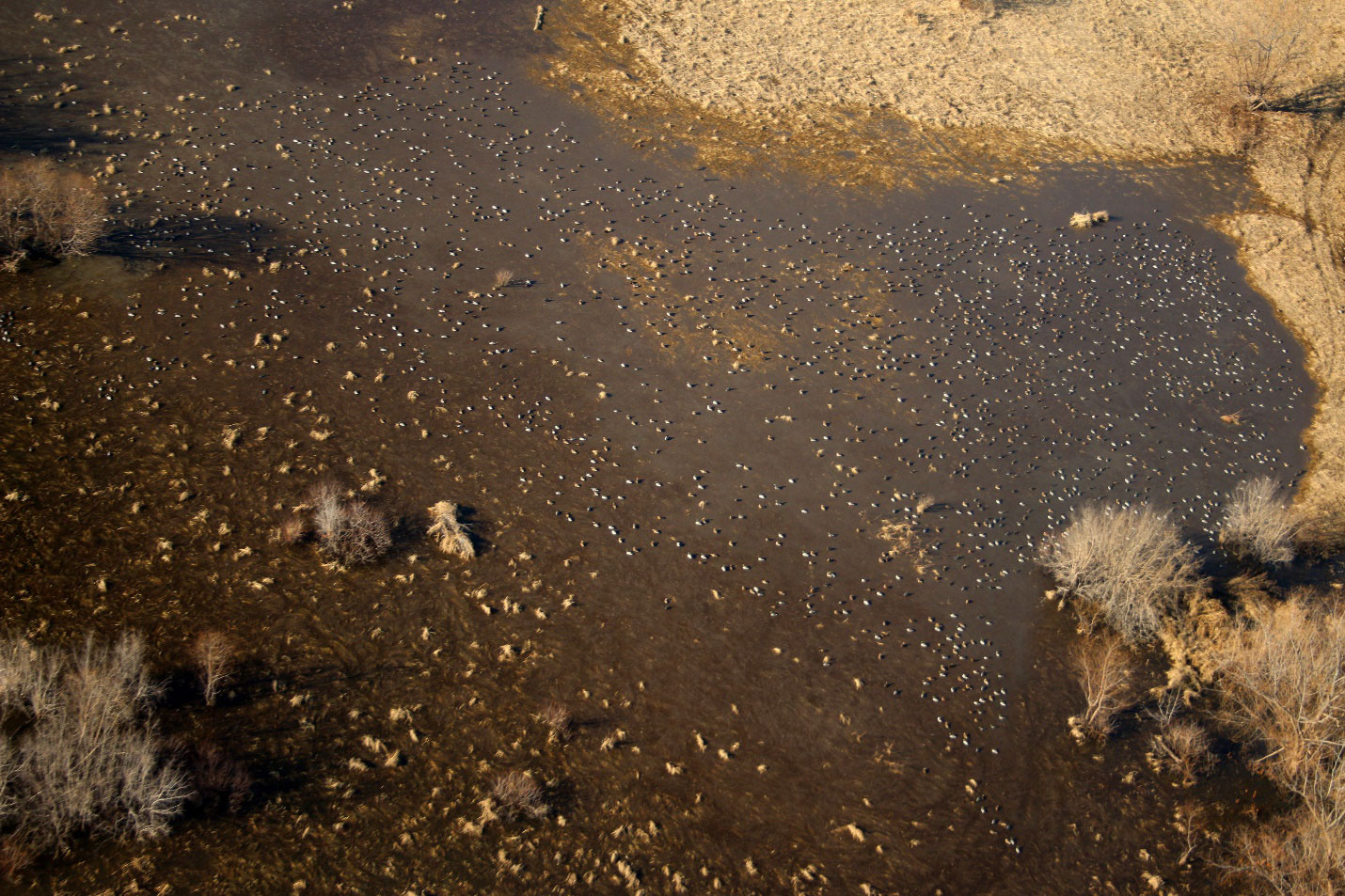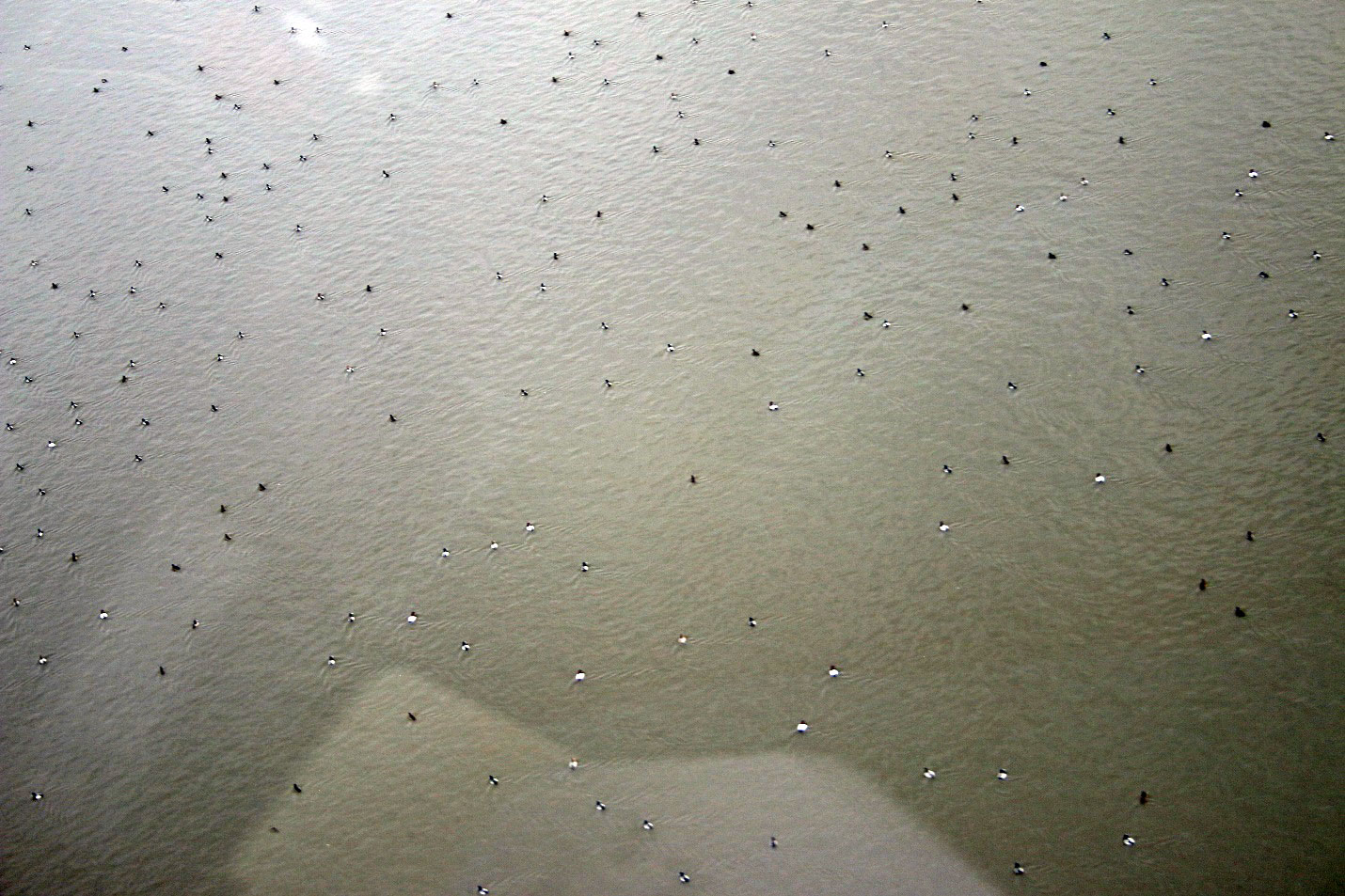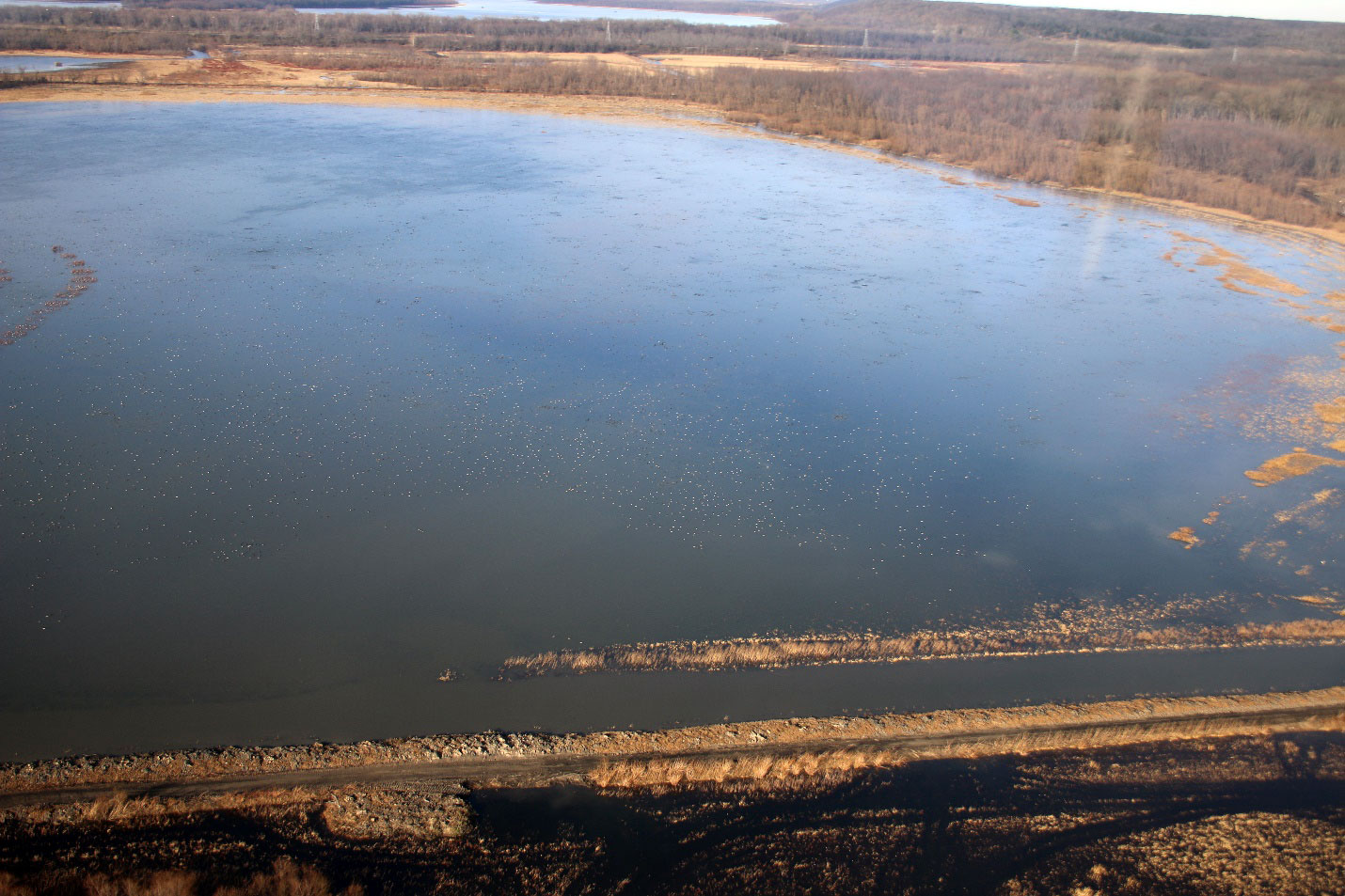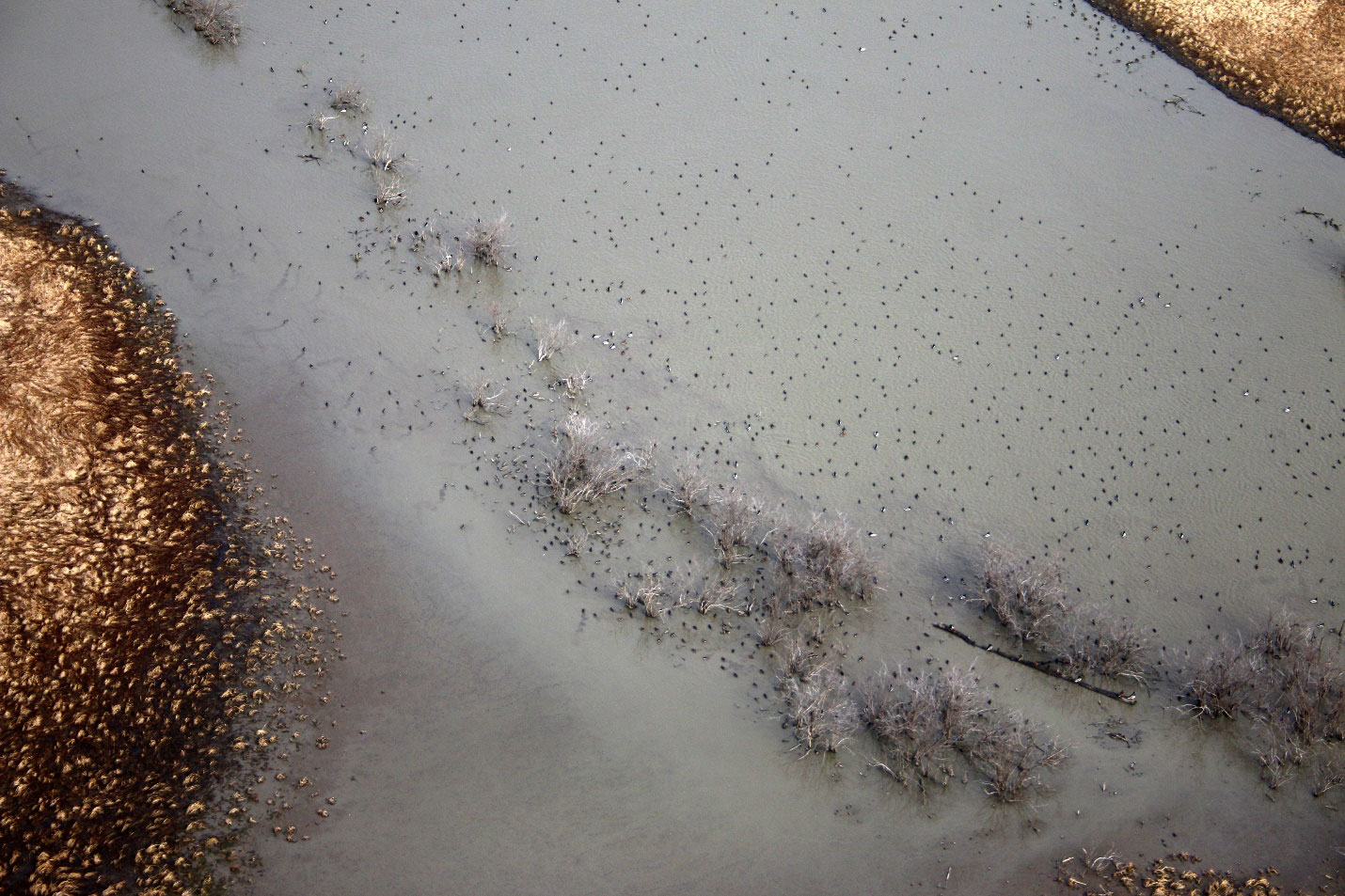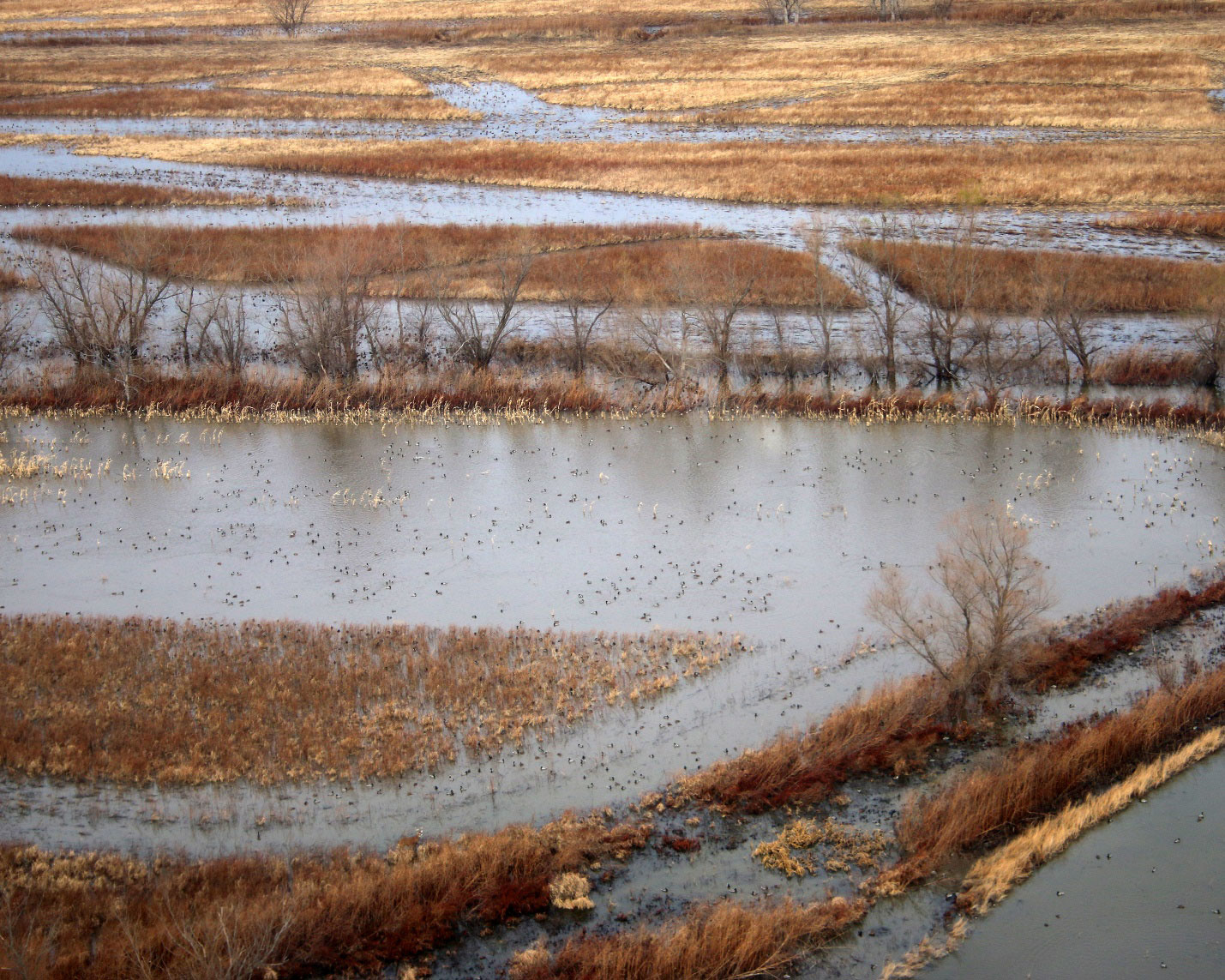We started the waterfowl survey on Tuesday the 8th, but the weather deteriorated quickly and we had to abandon the flight. We were successful in completing the entire flight on Thursday, December 10th. The ice we witnessed last week was all but gone, and the good news is we still have a few ducks around. We counted 241,875 ducks along the Illinois River and >60% of those birds were mallards. Likewise, we estimated 414,560 ducks along the central Mississippi River this week with about 41% of those being mallards. Surprisingly, we still have very strong numbers of northern pintail, green-winged teal, gadwall, northern shoveler, and canvasbacks around.
The bad news is we lost about half of our ducks compared to the December 2nd survey or roughly down 43% along the Illinois River and 50% along the central Mississippi River. I am sure some of the duck decline was due to birds moving back out on the landscape as the wetlands thawed and the ice diminished, but I believe some of those birds ended up in southeastern Missouri and western Tennessee. A couple of hunters have told me the ducks departed central Illinois on Saturday and Sunday evenings shortly after sunset. And I have heard from a couple of hunters that shot limits of ducks in western Tennessee over the last couple of days.
Our duck seasons are drawing to a close up here in northern and central Illinois. The north zone goes out on Tuesday, December 15th, while the central zone ends on Tuesday, December 22nd. Get out there and enjoy the remaining days of the season! Maybe the coming rain and snow on December 11-12 will bring in a few new migrants to end our seasons on a high note. Time will tell.
Be careful out there!
